Japanese garden stones - an ancient way to decorate the landscape, which has gained considerable popularity today. If you want to create such a composition on your site, to familiarize yourself with the concept, the basic principles and elements of the Japanese Garden will help our article.
What is a Japanese garden of stones
In ancient Japan, the garden of stones were not just a decorative composition, but was an architectural structure, symbolizing the place of residence of the gods. Creating similar creations, people thus stripped at least a little closer to the highest forces, conquer their location and patronage.
At the first time of its existence, Japanese kindergartens were located in the midst of water bodies, where the combination of stone and water was the embodiment of two began - Yin and Yang. Subsequently, art has undergone changes and dry gardens appeared on the world, where sand was present instead of water, and large boulders were located in the middle of it, as if the island in the ocean. Over the years, the stone compositions were complemented by the figures of the sacred beings: birds and animals.
The classic garden of stones is a flat canopy playground, the sand layer on which stones of different sizes, shapes and species are located. Elements in such an ensemble are not charged, but in a strictly prescribed manner, although at first glance it is impossible to understand this. Each detail of the composition has its own place, role and meaning.
So that the sand resembled a water surface, there are wave-like grooves on it with special robberies. These drawings form concentric circles around the stones. It is believed that in a properly decorated stone garden from any point of the review, the same number of elements should be viewed.
Features of the creation of a Japanese garden
Since stones are the central accent of such compositions, then each of them should be a carefully selected instance. In ancient times, search for boulders sent monks who tried to find as many attractive stones as possible. They had to have an unusual form or color, as well as natural faces. Some stones were treated by creating statues of them, others simply placed in accordance with the rules and customs.
Despite the fact that the composition was created by the hands of a person, she should have looked natural and naturally. And although today such gardens are no longer sacral meaning, the main canons in their creation are still accepted. By the way, sand and stones can be completed with other elements: Japanese plants, lanterns, reservoirs.
When designing a garden in Japanese traditions, 4 fundamental principles should be taken into account:
- Stones are a central part of the ensemble, a kind of worship object. In the ancient Japan, the stone symbolized the sacred mountain - the place of residence of the deities, and people were spiritualized not only the sloped parts of the rock, but also the whole mountain of the whole. The classic garden option is the composition "Horai mountain", where the largest cobblestone is located in the center of the reservoir. Another famous version of the stone garden is called the "Island of Zhuravl". In such an ensemble, along with other elements there are trees, shrubs, flowers.
- When creating a Japanese garden of stones with their own hands, the principle of choosing boulders should be adhered to. It is important here to take into account their shape, color, structure. The form plays a particularly important role in the event that the stone is a single garden detail. Skoli on the stones should be natural, created by nature itself, depotable rains and winds for many years. In Japanese gardens, preference is given to rounded, inclined, stepped, flat stones, but are trying to avoid spherical or cubic forms. When choosing a color, the combination of shades, mattiness and glossiness of different elements should be considered. It is desirable that the composition does not look overwhelming and the Pestro, as it must pacify, bring peace and harmony into the soul. If there are splashes, spots on the stones, you should install them in the garden to the side that is visible to the most profitable. It is very important that the boulders are combined both by their structure, texture, hardness. In Japanese gardens, it is customary to use strong and solid rocks that will retain their view for decades or even for century.
- The third principle involves respect for balance and harmony when placing stones. Creating a composition, it is desirable to avoid the same type, symmetry, smooth lines. The ensemble must create the impression of naturalness.
- The number of parts in the Japanese garden also matters. In classical Japanese culture, it is customary to use an odd number of elements starting from three. Often stones set separate groups.
Rules for arranging Japanese Garden Stones
- The same in the height of the boulders should be placed in separate groups or on distance from each other, but not only. The same applies to stones with similar shapes and sizes.
- The Japanese garden should include breeds from one natural zone. It is not recommended to combine minerals of mountain, river, marine origin in the composition.
- It is important to adhere to one color scheme, experimenting only with various shades.
- It is not recommended to place stones in one vertical plane.
- The Japanese kindergarten must be focused on a specific viewing angle. Moreover, the point of contemplation should be chosen depending on what time of day you plan to enjoy the beauty of the ensemble. It is believed that the viewing point should be located from the north, so that at noon the sun rays did not blindly blindly. But if you are in the garden mainly in the morning and in the evening, then the object for concentration is desirable to place in the West or in the East.
- In the garden, the filled spaces are harmoniously combined with open, deserted platforms.
Additional elements of the Japanese stone garden
The central accent of the Japanese compositions are stones that we have already said should be competent, combine and arrange. But the Japanese garden will not look fully without other important details. What other elements may include a similar ensemble, we will look at:
- The fence is a necessary part that will help to hide from prying eyes and create the necessary atmosphere of silence, calm and privacy. Fences in Japanese gardens are made opaque. Concrete fences are often used in modern landscape compositions, but they do not look so harmonious as I would like. To supplement the Japanese style, it is better to build a fence from a wild stone, make an elevation from bamboo or to build a woven from the branches. Near the pastry will not hurt to plant creeping plants with curly stems.
- Tsukubai is a stone bowl filled with water. In his way, Tsukubai resembles a wide barrel with a height of 20 to 30 cm. In Japan, there are hands in such bowls in such a bowl during tea ceremonies, in modern stone gardens Tsukubai is installed as a decorative landscape element.
- The stone tower also looks in the Japanese garden is very appropriate, such a tower, as a rule, are located near the stone bowl. The towers are round, four, six, octagonal, as a rule, they consist of several tiers. The number of floors must be odd, and the tower height is better to select the size of the Japanese garden. The more spacious playground under the stone composition, the higher the tower may be.
- In the Japanese stone gardens there will always be a place for lanterns, because they not only play a decorative role, but also perform practical functions, covering the platform at night. When choosing a flashlight, give preference to such materials like a tree, pumice, stone - they will perfectly fit into the overall stylistics and do not break harmony. The correct placement of lighting devices will help create an interesting game of light and shadow. Japanese lights are several species. Tacha Gata is high pedestal lights that are more often used in the extensive garden areas. The height of Tachi-Gata can reach 3 m. Hidden lanterns of ikekomi-gata, as a rule, are located near the Tsukubai bowl, although they can be found in any other corner of the site. Yuki-Gata is low squat lights with a wide flat roof, which has a square or round shape. Such elements are particularly spectacular in winter when snow cap is lying on their lid. Snowing snow from the inside looks beautiful and spectacular. For a stone Japanese garden, small-scale OKI-GATA lanterns are used. They are appropriate in small gardens, they also decorate the borders of the paths.
Patterns on the sand
The sandstate in the Japanese garden is made to decorate with special patterns that imitate the flow of water. Such divorces at their contemplation are designed to pacify, bring peace of mind and harmony into a human soul. Lines on sand can be different, and each type of drawing has its meaning. For example, straight grooves are considered a symbol of calm water stroits, curves and curved stripes mean turbulent streams. Waves arguing ashore are depicted in the form of concentric circles.
Drawings on the sand are performed by special robberies with replaceable nozzles. Nozzles have teeth of different lengths, widths and shapes. Before applying the lines on the sand, you can pre-portly depict a schematic pattern on paper, so that it subsequently fit in harmoniously into the overall concept of stone garden.
Creating tracks and paths
In the large area, the Japanese garden can not do without paths, which will allow you to move around the territory and not spoil the patterns on the sand. Tracks are desirable to create from those materials that will fit the garden stylistics. As a rule, in this case, stones or large pebbles are used, and sometimes bricks or concrete tiles. You can experiment with wood materials, for example, with spikes of Bruusyev. When creating paths, you should adhere to some rules:
- It is not necessary to lay out the stones, but observing a certain distance between them. If the elements differ in shape and size, then the seams between them should also be different widths. Try, so that at one point did not converge four lines.
- If the path is made of brick, it is desirable to withstand between them the seams of 1 cm wide.
- Large stones should be placed on a significant distance from each other, and free space can be filled with some kind of vegetation: low grass or flowers.
- The tracks in the Japanese garden should be comfortable, so that during the walk you did not jump off the stone on the stone, and contemplated the surrounding beauty.
- It is desirable that the paths were not angular. They must be curled smoothly and gently, connecting all the elements of the garden into a single composition.
The main property of the Japanese garden stones is to have rest, unity with nature. A similar place is created to calm and contemplation, so each element should cause a feeling of harmony in the shower.
Japanese garden stones, photo:



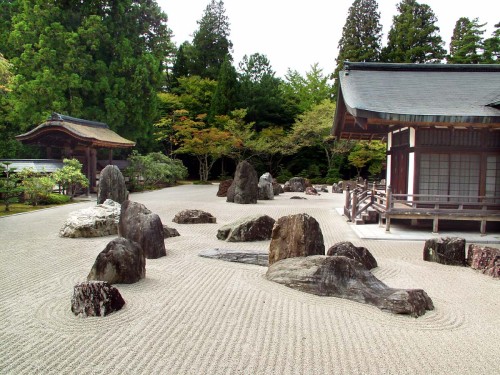
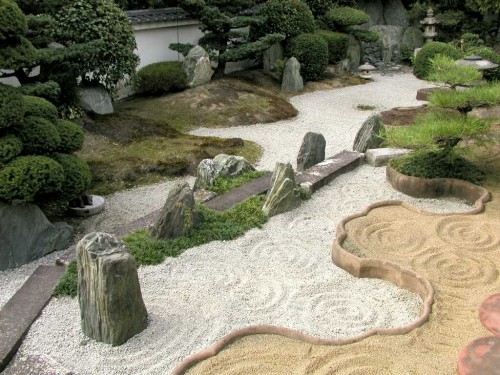
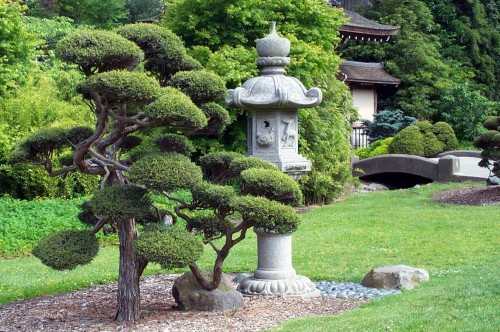
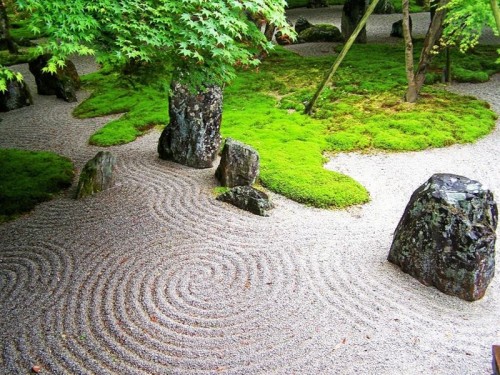
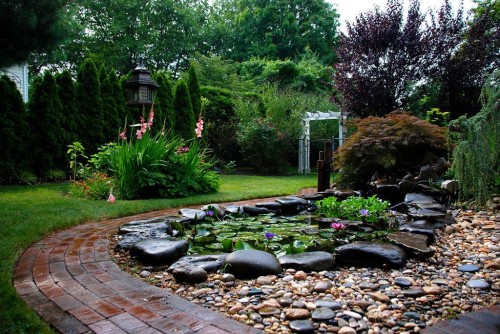
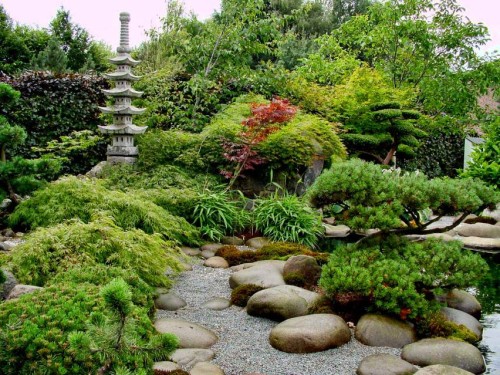
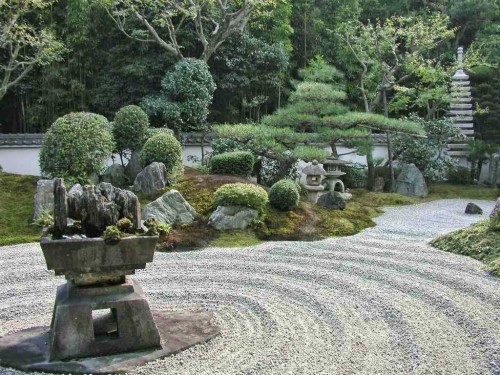
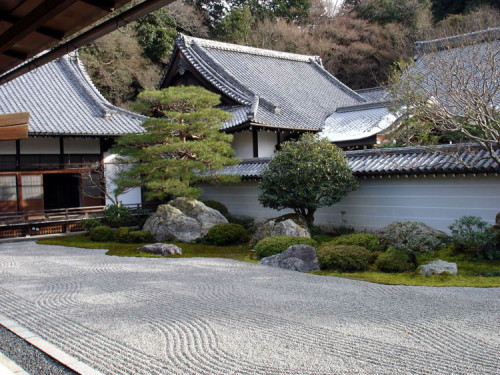
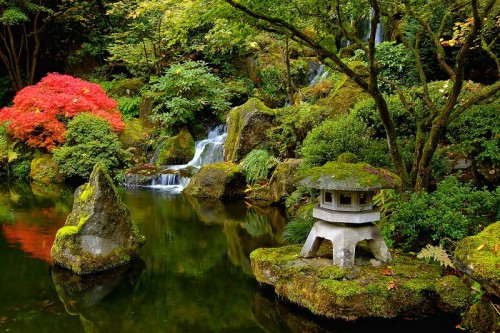
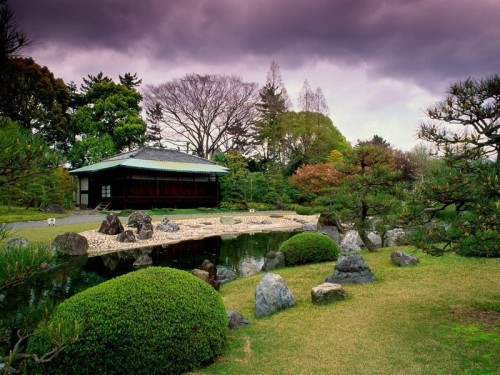
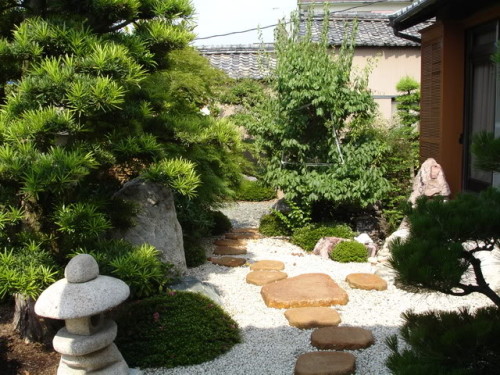












 Start a discussion ...
Start a discussion ...